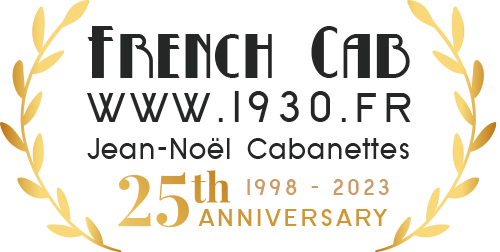Jean Despres modernist dish
Very hard to find 1st period modernist dish by Jean Despres (1889-1980).
Hand signed by artist. Silversmith Hallmarks.
Excellent condition.
Circa 1920. Pewter.
7.5cm x 6cm
(3" x 2.4")
Hand signed by artist. Silversmith Hallmarks.
Excellent condition.
Circa 1920. Pewter.
7.5cm x 6cm
(3" x 2.4")
REFERENCE: desp0407
Bio
Jean Eugene Gilbert Despres was born in Avallon, a small town in Burgundy, where his parents had a small shop selling jewelry and gifts. At the age of 16, he went to Paris to apprentice with a friend of his father, who had a jewelry and metal workshop in the Marais. At night, he studied design. Any spare time was spent in Montmartre, where he met Modigliani, Soutine, DeChirico, Signac, and most important, Georges Braque, who, with Picasso was the founder of Cubism. Despres and Braque became great friends.his happy period came to an end with the start of WWI. Despres found employment making aircraft parts, and this would have a great influence on his later jewelry designs.
After the war, he returned to Avallon, where he began designing original jewelry in silver, both to take advantage of the new taste for white metal, and to produce jewelry that would be affordable. The pieces that he designed were quite unique and avant-garde. He designed and made every piece himself, as he had become an accomplished artisan, and is perhaps the only "studio jeweler" of the Art Deco period. The workmanship of his pieces, especially the more complex earlier pieces, is outstanding.
Despres was also a very prolific designer of useful objects, including all manner of pieces for the table, including vases, tea and coffee services, flatware, trays, candelabra, pitchers, serving pieces and much more. The earlier of these pieces are quite severely geometric, and show great restraint in their design, often relying on only a hammered surface for textural interest.
Moving into the 1940's, he introduced a design feature that was perhaps a bit more commercial, but gave his pieces great chic - the addition of a heavy link chain called "gormette". This adorned many of his pieces, and played very well against both polished and hammered surfaces, and these pieces were in great demand, and remain so today.













